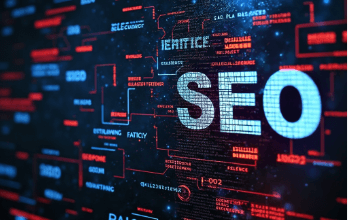aaAircraft Screening: A Critical Component of Transportation Compliance

Air travel connects nations by moving goods and services between international borders faster than ever before. The core aircraft screening system keeps operations legal and safe while maintaining overall performance.
Aircraft screening operates unobtrusively to ensure that all flights must follow strict safety and security criteria set by authorities. Screening aircraft helps to protect planes as well as the goods and services they transport according to national security requirements.
What Is Aircraft Screening?
Security personnel check all aircraft components and passengers to find restricted objects and security risks prior to takeoff. Officials perform various checks including physical searches and use X-ray scanners plus trace explosive equipment and trained dogs alongside modern imaging tools.
Screening rules depend on where the flight goes, who travels on it, and what type of items are shipped. All screening operations must follow official rules set by agencies such as TSA in the US or their counterparts in other countries.
See also: How to Navigate the Knoxville, TN Business-for-Sale Market
Why Aircraft Screening Is Crucial for Compliance:
Transportation compliance means following every rule that controls how people and goods move through transportation networks. Aviation compliance requires following FAA and ICAO safety rules plus following customs rules and environmental laws while meeting security standards.
Aircraft screening helps organizations follow important rules through multiple channels.
- Screening procedures find dangerous items that protect passengers from harm.
- The cargo screening process helps cargo companies maintain reliable transport operations in both business-to-business and logistics sectors. Screening is necessary to keep supply chains legal and avoid financial penalties.
- The system helps airlines and freight operators follow government trade rules and customs rules. The screening process finds objects that violate established security rules.
- Screening systems find and stop terrorism threats while stopping illegal activities and human trafficking which make our homeland safer.
Aircraft Screening for Passenger Flights:
Airlines start aircraft security checks before passengers come to the airport. Airlines and airport officials screen passenger information to identify travelers who need special attention based on their names and flight bookings.
When entering the airport passengers need to pass through multiple security checks.
- Metal detectors and body scanners
- Baggage X-rays and physical bag checks
- ID verification and biometric scans
Security agents randomly select passengers for further security checks
Screening procedures in this field must meet high standards because any failures could result in major disasters. The TSA and worldwide security organizations inspect airports and airlines to verify their security procedures match worldwide requirements.
Aircraft Screening in Cargo Transportation:
Although people think mainly about passenger screening at airports, aircraft cargo screening plays an equally important role especially under certain circumstances. Staying in control of what travels by air is vital because aircraft carry large amounts of cargo every year.
Screening cargo depends on these main activities:
- Our system uses X-ray and CT scanners to inspect all parcels and pallets.
- Canine inspections for explosives or drugs
- Team members examine unusual item shapes by hand
We confirm cargo details by matching them to shipping records.
Companies that handle special materials like medicine drugs and military goods need cargo screening both to protect security and follow industry rules.
All passenger flight cargo needs to meet the same security standards that apply to passenger luggage under American screening rules. Breaking shipping rules leads to severe financial consequences and business license loss while harming the company’s public image.
Challenges in Aircraft Screening and Compliance:
Although aircraft screening protects us it faces different types of problems. Airlines freight operators and regulatory agencies encounter several main problems in their operations.
The system needs to process a large number of passengers and shipments every day while maintaining precise security checks.
- The people who break security rules keep inventing new ways to avoid detection so security teams must regularly update their screening tools and processes.
- Different screening regulations in every nation make worldwide compliance difficult and need worldwide standardization.
- Operating advanced screening technology and hiring qualified staff costs a lot of money. The need to properly fund security while following legal requirements stays a permanent issue.
Future Trends in Aircraft Screening:
The aviation industry faces AML Compliance challenges so it adopts new advanced solutions to meet these needs. These include:
- Machine learning tools examine X-ray and CT scan results better and faster than human security agents.
- Threat detection systems that work automatically help us find real threats faster.
- The blockchain system confirms where cargo comes from and what items it contains to help companies follow rules when moving goods across international borders.
Modern aviation businesses now use integrated compliance software to monitor screening progress while receiving real-time alerts and recording system activities.
Final Thoughts:
Aircraft screening operates as a core system that backs up all transportation compliance operations. Your operations stay legal and trustworthy while protecting people and assets through effective screening methods.
Effective aircraft screening stands as a top defense tool for aviation professionals because compliance rules must be followed and dangers are substantial.






